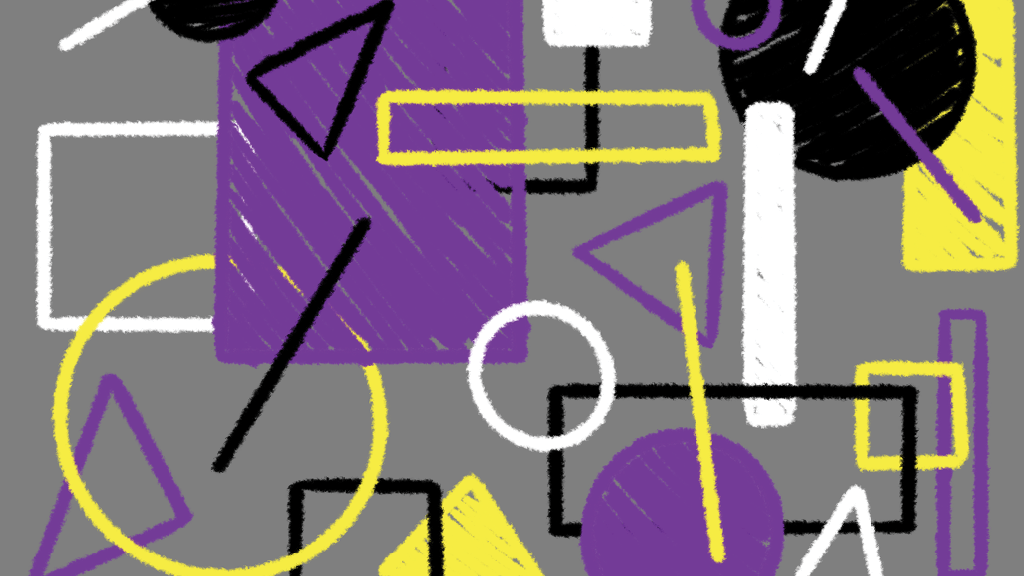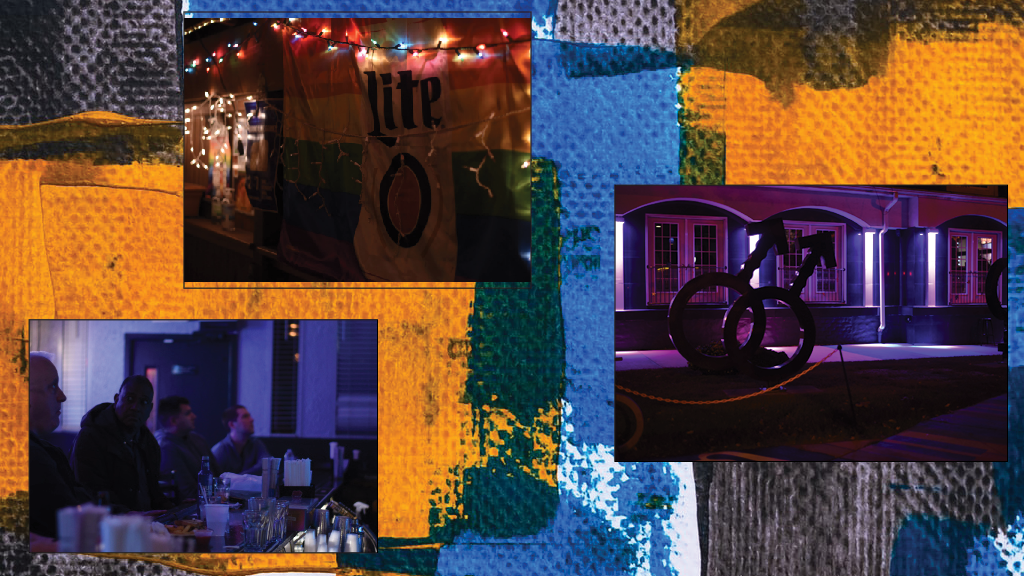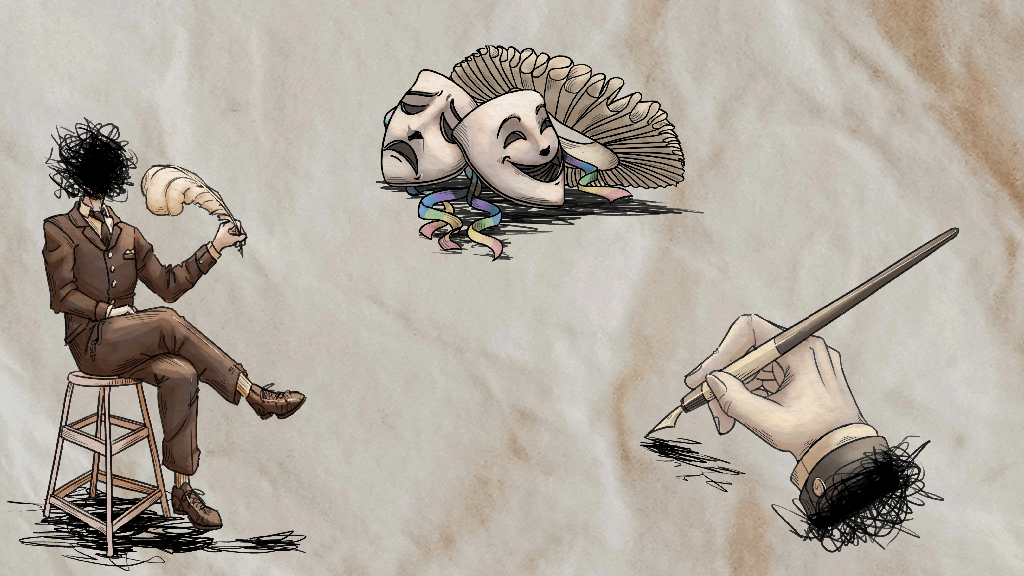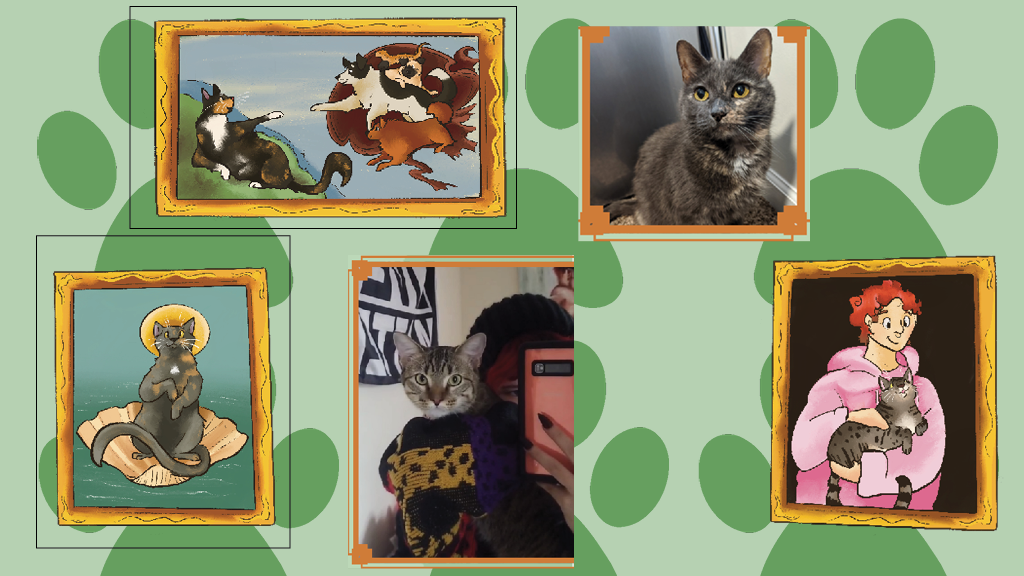From as early as the 14th century to the modern era, singular they/them pronouns have signified a gender-neutral identity that defies gender stereotyping.
The commonly used nonbinary pronoun, singular “they,” could likely be the English language’s oldest gender-neutral pronoun. With constant references throughout history, literature and spoken English, the use of they/them pronouns is far from new.
The History of the Singular “They”
Abby Rocktaschel, a second year Medical Illustration student, identifies as nonbinary and uses they/them pronouns.
“One way I found out was by … repeating my name and saying, ‘I’m Abby, I go by they/them pronouns,’” Rocktaschel said. “And I tried it with every pronoun I could think of and just using they/them made me feel the most comfortable.”
Gender identity for nonbinary individuals is neither strictly male nor strictly female, as they exist outside of that binary.
While nonbinary identities range from agender to bigender to genderfluid, individuals may arrive at a series of possibilities, combinations and outcomes when it comes to being nonbinary. Therefore, nonbinary acts as an umbrella term for many different identities outside of the binary as well.
“For me, [being nonbinary] just means that I don’t fit into the mold of being female or male,” Rocktaschel stated.
Emi Simpson, a fourth year Computer Science major, identifies as nonbinary and uses any or all pronouns.
“Even when somebody’s presentation doesn’t match their gender, they’re still conceived of from that lens,” Simpson said. “And so I call myself nonbinary in the sense that I do not want to be conceived in relation to any of those lenses.”
As for why more and more individuals feel comfortable identifying as nonbinary or using they/them pronouns, Dr. Alan Smerbeck, an Aassociate Pprofessor with the department of Psychology at RIT, highlighted society’s increase in awareness and acceptance of gender-neutral identities.
“More people have seen it as safe and possible to come out, and that’s why there’s going to be more identification and use of those pronouns,” Smerbeck said.
With increased acceptance, the exploration of gender nonconformity can allow individuals to grow more confident and self-empowered in their gender expression.
“[Using they/them pronouns] just fits my identity best,” Rocktaschel stated. “And it just reassures me that I don’t need to be limited by being seen as female anymore … It just felt fitting and more inclusive for me.”
Not a “Third Gender”
Despite the use of pronouns beyond “he” and “she,” nonbinary is not a “third gender.” In fact, that defeats the purpose for many.
That kind of label tends to group together very different people into a single identity.
“A bigender person and an agender person are really quite different, and putting them together in the third gender category in that sense is overlooking some important differences,” Smerbeck explained.
The term nonbinary includes a variety of identities, terms and expressions. As a result, categorizing it as a “third gender” omits this fact.
Although, for those who share collective struggles, concerns or political aims, forming groups to create allyship can provide value in solidarity and advocacy.
Evolution of English Pronouns
Much like the widespread increase in use of singular “they/them” seen today, pronouns have shifted in the English language before. Once the most widely-used pronouns in the English lexicon, “thee” and “thou” are now outdated and obsolete, for example.
“Pronouns tend to change slowly, but that doesn’t mean they won’t continue to change,” Smerbeck said.
Although critics often label the use of singular they/them pronouns as illogical or ungrammatical, such pronouns have been used for centuries throughout the history of writing. Shakespeare’s “Hamlet,” Jane Austen’s “Pride and Prejudice” and Geoffrey Chaucer’s “The Canterbury Tales” all described people using singular “they” and “them.”
“I always like to remind people that language is fluid and flexible, and language is not strictly logical,” Smerbeck added.
“Language is fluid and flexible, and language is not strictly logical.”
Future of Gender Diversity
The shift towards more inclusive and gender neutral terms has continued over the past 20 years, allowing more people to become aware of gender in their language.
For example, gender-specific titles have become more gender-neutral, replacing terms like ‘fireman’ with ‘firefighter’, or ‘freshmen’ with ‘first year students.’
“People are starting to notice how certain words are used in a gendered way, and I think that can’t help but be good for transgender and nonbinary people,” Smerbeck said.
As gender identity and expression grow more diverse, the relationship between pronouns and gender — or lack thereof — is important to understand.
Simpson emphasized that pronouns are just that: pronouns, and therefore do not necessarily imply one’s gender.
“My goal is that my pronouns don’t say anything about my gender … My gender isn’t something that’s meant to be understood through pronouns,” Simpson stated.
“My gender isn’t something that’s meant to be understood through pronouns.”
One in four LGBTQ+ youths use pronouns other than he/him or she/her. This includes the use of neopronouns, or words that can be used or created to serve as pronouns without expressing gender.
Neopronouns developed from around the 19th and 20th centuries to today and offer people a variety of gender identities beyond just three pronoun categories.
When it comes to neopronouns, some examples may include “xe/xem/xyrs,” “ze/zir/zirs” and “fae/faer/faers.” Anyone, including cisgender individuals, can use neopronouns without it necessarily having to suggest something about their gender.
“They’re just pronouns, and they’re there and anybody can use them,” Simpson said.
In addition, some people may use multiple pronouns or go by a certain set of pronouns only to certain audiences. If uncertain about another person’s pronouns, politely asking or sharing one’s own pronouns can help encourage other people to share theirs.
There are many ways to be nonbinary, and for many, it offers freedom from the confines of conforming to the gender binary. With the diversity that the non-binary community exhibits, each experience is different, nuanced and valid.







